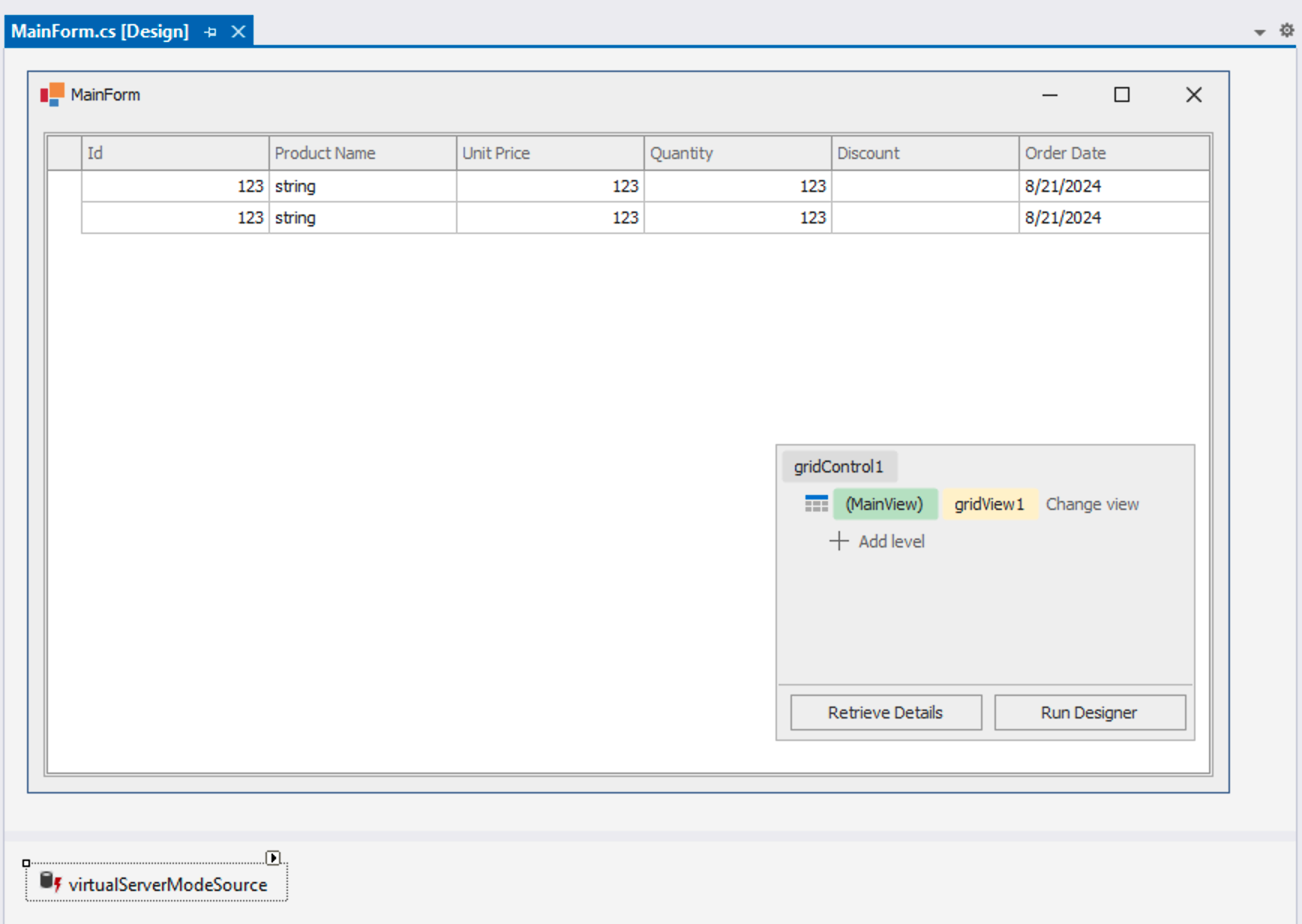三十四、双链表
示例:
#include <iostream>
using namespace std;
typedef int ElemType; // 自定义链表的数据元素为整数。
struct LNode // 双链表的结点。
{
ElemType data; // 存放结点的数据元素。
struct LNode* prior,*next; // 前驱和后继结点的指针。
};
// 初始化链表,返回值:失败返回 nullptr,成功返回头结点的地址。
LNode* InitList()
{
LNode* head = new (std::nothrow) LNode; // 分配头结点。
if (head == nullptr) return nullptr; // 内存不足,返回失败。
head->prior = head->next = nullptr; // 前驱后继结点都置为空。
return head; // 返回头结点。
}
// 销毁链表。代码和单链表相同。
void DestroyList(LNode* head)
{
// 销毁链表是指释放链表全部的结点,包括头结点。
LNode* tmp;
while (head != nullptr)
{
tmp = head->next; // tmp 保存下一结点的地址。
delete head; // 释放当前结点。
head = tmp; // 指针移动到下一结点。
}
}
// 在链表的头部插入元素(头插法),返回值:false-失败;true-成功。
bool PushFront(LNode* head, const ElemType& ee)
{
if (head == nullptr) { cout << "链表不存在。\n"; return false; }
LNode* tmp = new (std::nothrow) LNode; // 分配一个新结点。
if (tmp == nullptr) return false;
tmp->data = ee; // 把元素的值存入新结点。
// 处理 prior 和 next 指针。
tmp->prior = head; // 当前结点的 prior 指针指向 head。
tmp->next = head->next; // 当前结点的 next 指针指向 head->next。
tmp->prior->next = tmp; // 让前驱结点的 next 指针指向自己。
// head->next = tmp;
// 让后继结点的 prior 指针指向自己。注意:如果当前结点是最后一个结点,tmp->next 根本
不存在。
if (tmp->next != nullptr) tmp->next->prior = tmp;
return true;
}
// 显示链表中全部的元素。代码和单链表相同。
void PrintList(const LNode* head)
{
if (head == nullptr) { cout << "链表不存在。\n"; return; }
LNode* pp = head->next; // 从第 1 个结点开始。
while (pp != nullptr)
{
cout << pp->data << " "; // 如果元素为结构体,这行代码要修改。
pp = pp->next; // 指针往后移动一个结点。
}
cout << endl;
}
// 在链表的尾部插入元素(尾插法),返回值:false-失败;true-成功。
bool PushBack(LNode* head, const ElemType& ee)
{
if (head == nullptr) { cout << "链表不存在。\n"; return false; }
LNode* pp = head; // 从头结点开始。
// 找到最后一个结点,pp 将指向尾结点(最后一个结点)。
while (pp->next != nullptr) pp = pp->next;
LNode* tmp = new (std::nothrow) LNode; // 分配一个新结点。
if (tmp == nullptr) return false;
tmp->data = ee; // 把元素的值存入新结点。
// 处理 prior 和 next 指针。
tmp->prior = pp; // 当前结点的 prior 指针指向 head。
tmp->next = nullptr; // 当前结点的 next 指针指向 head->next。
tmp->prior->next = tmp; // 让前驱结点的 next 指针指向自己。
// 既然是尾插法,那么就肯定没有后继结点,不需要处理它的 prior 指针。
return true;
}
// 求链表的表长,返回值:>=0-表 LL 结点的个数。代码和单链表相同。
size_t ListLength(LNode* head)
{
//if (head == nullptr) { cout << "链表不存在。\n"; return 0; }
//LNode* pp = head->next; // 头结点不算,从第 1 个结点开始。
//size_t length = 0;
//while (pp != nullptr) { pp = pp->next; length++; }
//return length;
// 不使用临时变量,如何计算链表(包括头结点)的长度?
if (head==nullptr) return 0;
return ListLength(head->next)+1;
}
// 删除链表第一个结点。
bool PopFront(LNode* head)
{
if (head == nullptr) { cout << "链表不存在。\n"; return false; }
if (head->next == nullptr) { cout << "链表为空,没有结点。\n"; return false; }
LNode* pp = head->next; // pp 指向第一个节点。
head->next = head->next->next; // 修改头结点的 next 指针。
// 让后继结点的 prior 指针指向头结点。
// 注意:需要特殊处理,如果待删除的结点是最后一个结点,head->next 根本不存在。
if (head->next != nullptr) head->next->prior = head;
delete pp; // 删除第一个节点。
return true;
}
// 删除链表最后一个结点。代码和单链表相同。
bool PopBack(LNode* head)
{
if (head == nullptr) { cout << "链表不存在。\n"; return false; }
// 必须加上这个判断,否则下面的循环 pp->next->next 不成立。
if (head->next == nullptr) { cout << "链表为空,没有结点。\n"; return false; }
LNode* pp = head; // 从头结点开始。
// 找到倒数第二个结点(包括头结点)。
while (pp->next->next != nullptr) pp = pp->next;
delete pp->next; // 释放最后一个结点。
pp->next = nullptr; // 倒数第二个结点成了最后一个结点。
return true;
}
// 清空链表,清空链表是指释放链表全部的结点,但是,不释放头结点。代码和单链表相同。
void ClearList(LNode* head)
{
if (head == nullptr) { cout << "链表不存在。\n"; return; } // 判断链表是否存在。
LNode* tmp1;
LNode* tmp2 = head->next; // 从头结点的下一个结点开始释放。
while (tmp2 != nullptr)
{
tmp1 = tmp2->next;
delete tmp2;
tmp2 = tmp1;
}
head->next = nullptr; // 这行代码一定不能少,否则会留下野指针。
}
// 查找元素 ee 在链表中的结点地址,如果没找到返回 nullptr,否则返回结点的地址。代码和单链
表相同。
LNode* LocateElem(const LNode* head, const ElemType& ee)
{
LNode* pp = head->next; // 从第 1 个存放数据结点开始。
while (pp != nullptr)
{
// 如果数据元素是结构体,以下代码要修改成比较关键字。
if (pp->data == ee) return pp;
pp = pp->next;
}
return pp;
}
// 获取链表中第 n 个结点,成功返回结点的地址,失败返回 nullptr。
// 注意,n 可以取值为 0,表示头结点。代码和单链表相同。
LNode* LocateNode(LNode* head, unsigned int n)
{
if (head == nullptr) { cout << "链表不存在。\n"; return nullptr; }
LNode* pp = head; // 指针 pp 指向头结点,逐步往后移动,如果为空,表示后面没结
点了。
unsigned int ii = 0; // ii 指向的是第几个结点,从头结点 0 开始,pp 每向后移动一次,
ii 就加 1。
while ((pp != nullptr) && (ii < n))
{
pp = pp->next; ii++;
}
if (pp == nullptr) { cout << "位置" << n << "不合法,超过了表长。\n"; return nullptr; }
return pp;
}
// 在指定结点 pp 之后插入元素 ee。
bool InsertNextNode(LNode* pp, const ElemType& ee)
{
if (pp == nullptr) { cout << "结点 pp 不存在。\n"; return false; }
LNode* tmp = new LNode;
tmp->data = ee;
tmp->next = pp->next;
tmp->prior = pp;
tmp->prior->next = tmp; // 让前驱结点的 next 指针指向自己。
// 让后继结点的 prior 指针指向自己。注意当前结点是最后一个结点,tmp->next 根本不存在。
if (tmp->next != nullptr) tmp->next->prior = tmp;
return true;
}
// 在指定结点 pp 之前插入元素 ee。
bool InsertPriorNode(LNode* pp, const ElemType& ee)
{
if (pp == nullptr) { cout << "结点 pp 不存在。\n"; return false; }
LNode* tmp = new LNode;
tmp->data = ee;
tmp->next = pp;
tmp->prior = pp->prior;
tmp->prior->next = tmp; // 让前驱结点的 next 指针指向自己。
tmp->next->prior = tmp; // 让后继结点的 prior 指针指向自己,不需要特别处理。
return true;
}
// 删除指定结点。
bool DeleteNode(LNode* pp)
{
if (pp == nullptr) { cout << "结点 pp 不存在。\n"; return false; }
pp->prior->next = pp->next; // 让前驱结点的 next 指针指向 pp 的后继结点。
// 让后继结点的 prior 指针指向前驱结点。注意,如果当前结点是最后一个结点,pp->next 根
本不存在。
if (pp->next != nullptr) pp->next->prior = pp->prior;
delete pp;
return true; // 可以在函数外面调用 PopBack()函数。
}
int main()
{
LNode* LL = InitList(); // 初始化链表 LL。
cout << "用头插法向链表中插入元素(1、2、3)。\n";
PushFront(LL, 1);
PushFront(LL, 2);
PushFront(LL, 3);
PrintList(LL); // 把链表中全部的元素显示出来。
cout << "用尾插法向链表中插入元素(4、5、6)。\n";
PushBack(LL, 4);
PushBack(LL, 5);
PushBack(LL, 6);
PrintList(LL); // 把链表中全部的元素显示出来。
cout << "链表的表长(包括头结点):" << ListLength(LL) << endl;
//PopFront(LL); PopFront(LL); PopFront(LL); PopFront(LL); PopFront(LL); PopFront(LL);
PopFront(LL);
//PrintList(LL); // 把链表中全部的元素显示出来。
//PopBack(LL); PopBack(LL); PopBack(LL); PopBack(LL); PopBack(LL); PopBack(LL);
PopBack(LL);
//PrintList(LL); // 把链表中全部的元素显示出来。
//ClearList(LL);
//PrintList(LL); // 把链表中全部的元素显示出来。
LNode *p1=LocateElem(LL, 4);
cout << "元素为 4 的结点的地址是:" << p1 << ",值是:" << p1->data << endl;
LNode* p2 = LocateNode(LL, 3);
cout << "位序为 3 的结点的地址是:" << p2 << ",值是:" << p2->data << endl;
cout << "在" << p2->data << "之后插入元素 8。" << endl;
InsertNextNode(p2, 8);
PrintList(LL); // 把链表中全部的元素显示出来。
cout << "在" << p2->data << "之前插入元素 7。" << endl;
InsertPriorNode(p2, 7);
PrintList(LL); // 把链表中全部的元素显示出来。
cout << "删除元素" << p2->data << "。" << endl;
DeleteNode(p2);
PrintList(LL); // 把链表中全部的元素显示出来。
DestroyList(LL); // 销毁链表 LL。
}
C++学习笔记(32)
news/2024/9/23 20:55:20/
相关文章
Nginx实用篇:实现负载均衡、限流与动静分离
Nginx实用篇:实现负载均衡、限流与动静分离 | 原创作者/编辑:凯哥Java | 分类:Nginx学习系列教程 Nginx 作为一款高性能的 HTTP 服务器及反向代理解决方案,在互联网架构中扮演着至关重要的角色。它…
计算机网络33——文件系统
1、chmod 2、chown
需要有root权限
3、link
链接
4、unlink
创建临时文件,用于非正常退出
5、vi
vi可以打开文件夹
../是向外一个文件夹 6、ls
ls 可以加很多路径,路径可以是文件夹,也可以是文件 ---------------------------------…
vue选项式写法项目案例(购物车)
一、初始化项目结构
1.初始化vite项目
npm create vite
cd vite-project
npm install
2.清理项目结构
清空App.vue
删除components目录下的HelloWorld.vue组件
3.为组件的样式启用sacc或less组件
npm i sass4.初始化index.css全局样式
:root{font-size:12px
}
二、封装…
2024自学手册——网络安全(黑客技术)
前言
什么是网络安全
网络安全可以基于攻击和防御视角来分类,我们经常听到的 “红队”、“渗透测试” 等就是研究攻击技术,而“蓝队”、“安全运营”、“安全运维”则研究防御技术。
如何成为一名黑客 很多朋友在学习安全方面都会半路转行,…
活动报名丨智源Workshop,从o1出发探索LLM推理与思维链
近期o1模型的发布,预示着AI在处理高度复杂问题上再次迈出一大步。大规模强化学习算法在一个数据极高的训练过程中,教会了模型如何利用其思维链进行富有成效的思考。 北京时间9月19日(本周四)晚7点,智源社区将组织「智源…
C++:使用tinyxml2获取节点下元素
场景
假设有以下 XML 文档:
<?xml version"1.0"?>
<Root><Kind>ExampleText</Kind>
</Root>以下是如何使用这行代码来获取 <Kind> 元素的文本内容:
#include "tinyxml2.h"
#include <i…
深度学习速通系列:中文文本处理步骤
在深度学习中,中文文本处理通常涉及以下几个关键步骤: 分词:由于中文文本不像英文那样有明显的单词分隔符,因此需要通过分词工具(如jieba)将句子切分成单个词语。 去除停用词和特殊字符:清理文…
DevExpress中文教程:如何将WinForms数据网格连接到ASP. NET Core WebAPI服务?
日前DevExpress官方发布了DevExpress WinForms的后续版本——将.NET桌面客户端连接到安全后端Web API服务(EF Core with OData),在本文中我们将进一步演示如何使用一个更简单的服务来设置DevExpress WinForms数据网格。
P.S:DevExpress WinForms拥有180…





